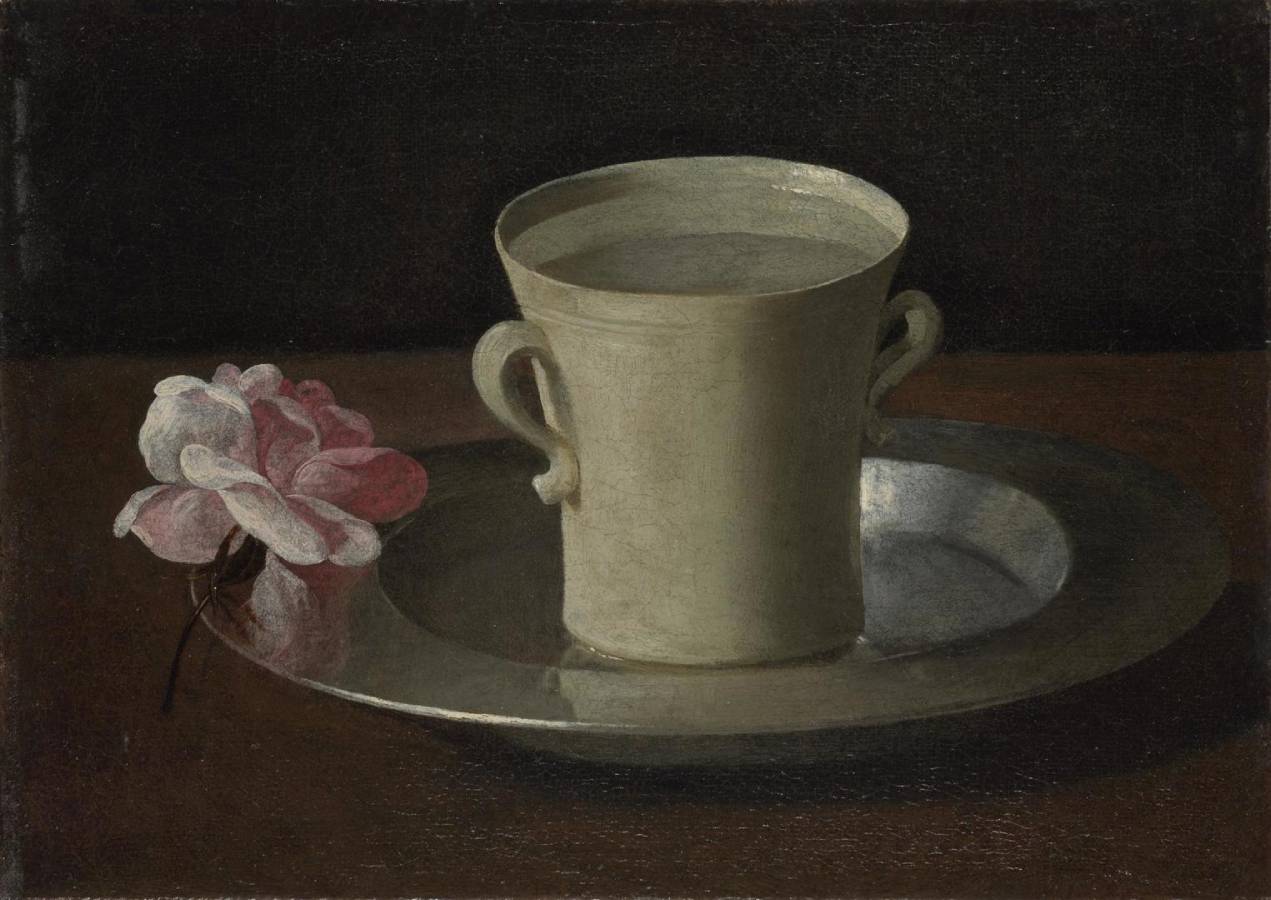Zurbarán, Francisco de (1598-1664)
Una taza de agua y una rosa (A Cup of Water and a Rose)
c.1630
Oil on canvas, 21.2 × 30.1 cm
National Gallery, London
In this small and intimate painting – it only measures around 20 by 30 cm – everyday objects appear monumental and take on a mystical intensity. On a tabletop or ledge, a ceramic cup of water with delicately curved handles sits in the centre of a shiny metal plate, made of pewter or silver. A rose in full bloom balances on the plate’s edge.
That these objects have religious significance would have been immediately obvious to devout Spanish viewers in the seventeenth century. The cup full of water was seen as a symbol of purity of the Virgin Mary, having been the one chosen by God to give birth to Christ. The rose is also often associated with Mary, and its thornlessness may refer to the Immaculate Conception (the belief that she was conceived without sin). According to the third-century saint, Ambrose, the roses in the Garden of Eden only grew thorns after Adam and Eve had sinned. The rose – and lily, another flower associated with the Virgin – also appears as a symbol in Still Life with Lemons in a Wicker Basket, a work by Juan de Zurbarán, a gifted still-life painter and Francisco’s son. There, we also see a reference to the Virgin’s purity in the delicate porcelain cup containing water.
Here, the cup, plate and rose are bathed in light, creating a marked contrast with the darkness behind. The stark simplicity of the surrounding space provides no distractions, and we are invited to appreciate the beauty of light reflecting on water and bouncing off polished surfaces. Different textures – the delicate rose petals, the cool smooth surface of the ceramic cup, and the reflections on the metal plate – are vividly conveyed. Francisco de Zurbarán’s painting encourages meditation and quiet contemplation, an approach not dissimilar to that which he adopted in his religious paintings.
This painting was probably made in the early 1630s, shortly after Zurbarán had moved to Seville and established a workshop there. Very few still-life paintings by him are known, though he frequently included still-life elements in his religious works. This painting is closely related to Zurbarán’s most celebrated still life, Still Life with Basket of Oranges (Norton Simon Museum, Pasadena), which is dated 1633. It is a larger composition which incorporates the three objects on show here, though with a minor variation in the position of the rose and a slightly different viewpoint. These differences suggest our painting is not merely a replica after a detail in the Norton Simon painting, but that it was produced as an independent work. It may have been cut down from a larger composition – the left edge of the canvas is intact, while the other three sides appear to have been reduced (though we don’t know by how much) – but what we see now is probably close to its original size.
The painting was acquired in the 1930s by Kenneth Clark, Director of the National Gallery from 1934 to 1945, for his private collection. It did not come to the National Gallery until 1997, however, and was the first seventeenth-century Spanish still-life painting to enter our collection. (NG)
